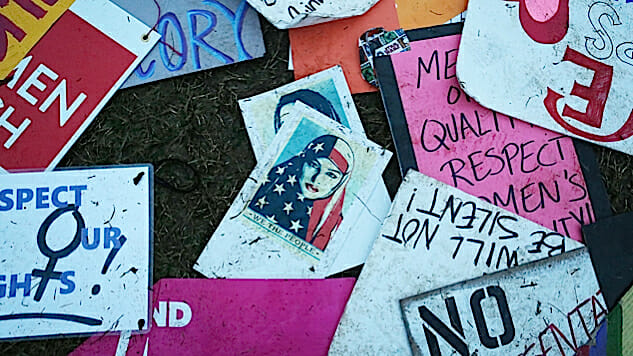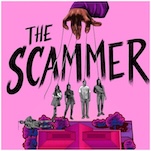What the Women’s March Taught Me
I was angry; I expected very little; I came away hopeful.
Photo by Mario Tama/Getty
I must admit that when I first heard about the Women’s March on Washington to protest the inauguration of President Donald J. Trump, I had conflicting feelings. This election saw identity politics exploited in historic fashion by the corporate-friendly Democratic establishment. Women’s issues and “feminism” in particular were cynically used as a means of deflecting criticisms from the left of Hillary Clinton, and the word “sexist” was thrown around unfairly.
That said, after reading the march platform, those concerns were slightly allayed. But although it had a strong message of intersectionality, embracing the goals of Black Lives Matter and the Occupy Wall Street Movement—largely thanks to the work of three of its national co-chairwomen, Tamika D. Mallory, Carmen Perez and Linda Sarsour—I still could not help but feel skeptical. I worried that such an action would inevitably be led by well-off “white feminists” who care deeply about the issues like sexism that impact their lives directly, but are blind to those that do not, like classism.
What would such a protest, run by that group, be accomplishing beside providing a group therapy session following perhaps the most revealing defeat in history? And what business did any of those individuals have being angry in the first place? After all, they supported, often viciously, the most obviously flawed candidate on the Democratic side in generations. What business did they have feeling owed anything after being complicit and complacent when the Democratic Party denied the stronger candidate, Bernie Sanders, a fair primary? Don’t we all have to suffer now for their bad judgment?
That said, my other half—my lovely girlfriend, Michelle—wanted to go, as did one of my good friends from college, fellow writer Mike Harrington. I admit I was cautiously interested. Perhaps this event would be the start of the new left. Clinton had lost to Trump, and exposed the hollowness of a Democratic Party which had built itself around strong personalities, but ceded the political high ground on policy. At the very least, the march would offer insight into how people were handling this new reality.
Having attended the Democratic National Convention in Philadelphia this past July, I had no illusions about unity. By now, everyone is aware of the split on the left between progressives and…let’s just call them liberals for now. The defining difference between them is that the former recognize class while the latter tend to overlook it. During the primary, animosity between these groups was exposed—animosity I was expecting to see on full display in DC.
While waiting on the metro platform in Falls Church, VA, for a train that was not full to capacity, I could not help but feel dispassionate—or disconnected—from the legions of cheering women in pink hats and “Nasty Woman” shirts. In a way, it felt very much like when I was at the DNC. I was frustrated, and so certain that I understood the crowd.
And yet, the first group of pink-hatted women I approached surprised me. “Who did you vote for in the primary?” I asked.
Much to my disbelief, three of the four said “Bernie!” You can almost hear my mental double take in my voice at the end.
My sense of disconnectedness soon returned after I managed to squeeze onto a train with my companions. In the middle of the car, Hillary campaign stickers adorned several women, and a gentleman was holding a sign that read “I’m with her” with arrows pointing in all directions. If this was to be the majority of what the protest was about, I felt that nothing would be accomplished.
Upon arriving in DC, I was determined to get what I thought would be my story: Clinton feminists organize a march to protest their sour grapes at losing both the White House and control of their party; that despite losing, they were unwilling or unable to change. After all, this is the impression trolls like Sally Albright give on social media.
-

-

-

-

-

-

-

-

-

-

-

-

-

-

-

-

-

-

-

-

-

-

-

-

-

-

-

-

-

-

-

-

-

-

-

-

-

-

-

-








































